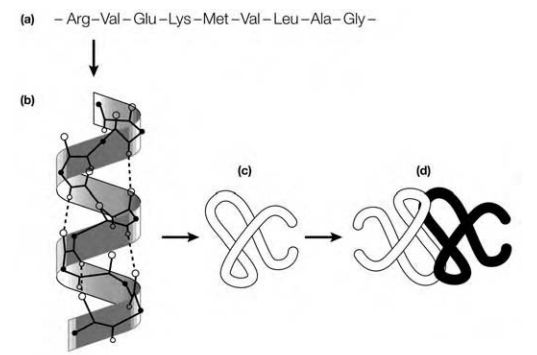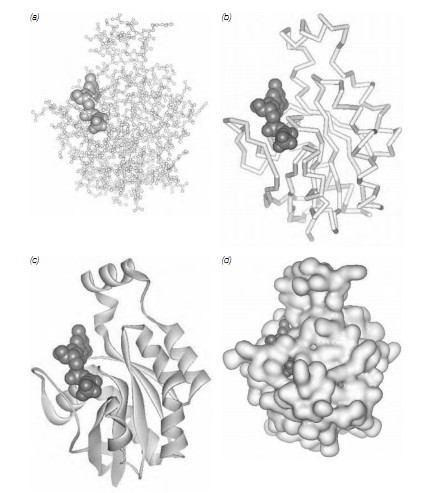uaternary structure
Proteins which contains more than one polypeptide chain, like hemoglobin, exhibit a 4th level of protein structure called as quaternary structure as shown in figure given below. This level of structure refers to spatial arrangement of the polypeptide subunits and nature of the interactions between them. These interactions can be covalent links (such as disul?de bonds) or noncovalent interactions (electrostatic forces, hydrophobic interactions, hydrogen bonding).

Fig. The four levels of structure in proteins. (a) Primary structure (amino acid sequence), (b) secondary structure (α-helix), (c) tertiary structure, (d) quaternary structure.

Figure Several graphic representations of structure of RND3/RHOE a small GTP-binding protein complexed with GTP (guanosine triphosphate in space?ll representation). (a) The ball- and-stick representation reveals location of the atoms in the protein. (b) Cα backbone trace shows how polypeptide chain is folded. (c) The ribbon representation emphasizes how α-helices and β-strands are organized in protein. (d) A model of water-accessible surface reveals numerous bumps and crevices on surface of the protein.